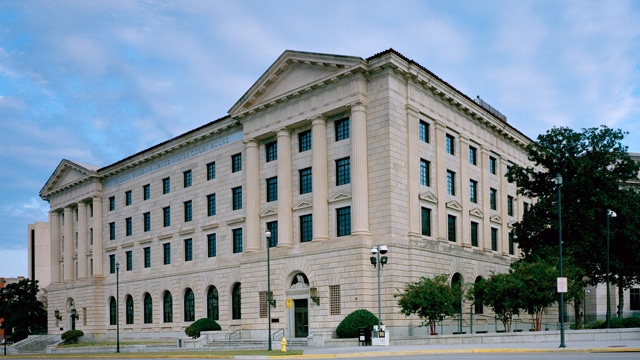Oct. 30, 1918
Judge Frank M. Johnson Jr. was born in Haleyville. Appointed to the position of federal judge of Alabama’s Middle District in October 1955 by President Dwight D. Eisenhower, Johnson served at the federal level for more than 40 years. He is best known for his landmark legal decisions that desegregated schools in Alabama and busing in Montgomery, eliminated the state poll tax, allowed blacks to serve on juries, and authorized the 1965 Selma to Montgomery March. Johnson was awarded the Presidential Medal of Freedom by President Bill Clinton in 1995, and the federal courthouse in Montgomery is named in Johnson’s honor.
Read more at Encyclopedia of Alabama.

Frank M. Johnson Jr. (1918-1999) was a federal judge whose legal decisions moved the civil rights movement forward in Alabama. His rulings led to desegregation of public places and equal opportunities for African Americans, and he authorized the Selma to Montgomery March in 1965. He also decided cases leading to improvements in mental health care in the state. (From Encyclopedia of Alabama, courtesy of University of Alabama W.S. Hoole Special Collections Library)

Participants, some carrying American flags, marching in the civil rights march from Selma to Montgomery, in 1965. (Photograph by Peter Pettus, Library of Congress Prints and Photographs Division)

More than 20,000 civil rights marchers crowded Dexter Avenue in front of the Alabama state capitol in Montgomery on March 25, 1965, as the Selma to Montgomery March came to an end. (From Encyclopedia of Alabama, photo courtesy of the Library of Congress)

Frank M. Johnson graduated law school at the University of Alabama in 1943, where he befriended future Alabama governor George C. Wallace. Johnson was wounded in action as soldier in Europe in World War II, and later defended enlisted men in court against charges of brutality by exposing orders given them by senior officers. (From Encyclopedia of Alabama, courtesy of The Birmingham News)

Frank M. Johnson Jr. Federal Building and U.S. Courthouse in Montgomery, 2005. (Library of Congress Prints and Photographs Division)
For more on Alabama’s Bicentennial, visit Alabama 200.











